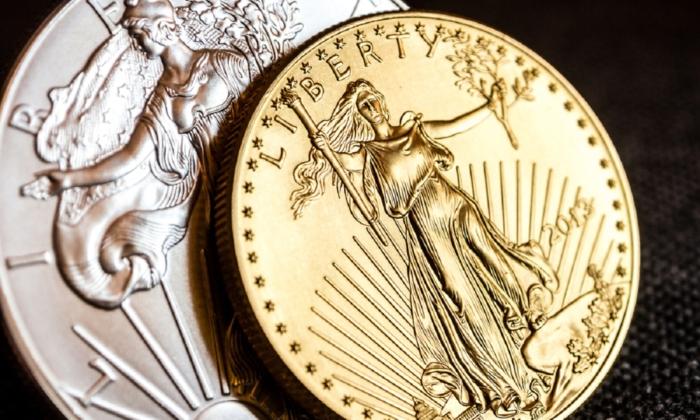“Fine gold” refers to any precious metal composed of 99.9% gold, commonly called “pure gold.” Understanding the fundamentals of gold purity is essential for investors, collectors, and numismatists. After all, the purity of gold bullion bars, coins, rounds, and jewelry directly impacts their value. Below, we'll explain everything you need about fine gold, purity levels, and more.
What Is Considered Fine Gold?
Characteristics of Pure Gold A metal must be at least 99.9 percent pure (999) or higher to be considered fine. Gold isn’t a pure metal; it’s an alloy. Alloys are substances that contain more than one metal or non-metallic element. Gold purities relate directly to the amount of other metals or nonmetallic elements it has: more of those additional elements lower the purity level.Experts use the scale of millesimal fineness to measure the precise purity of gold products, like gold bullion coins, bars, rounds, and jewelry. The millesimal fineness scale measures the number of parts per thousand of pure metal using a three-figure number to determine the purity level. However, pure gold can also be gold dust or flakes that meet purity standards, but are too small to measure on the scale of millesimal fineness. Throughout history, the ducat fineness scale was the measurement standard for the Holy Roman Empire mints and other historical coins, like Hungarian coins.
Purity Levels and Ratings
Gold that is 99.9 percent pure or higher is called “fine gold,” but the purest gold is known as five nines fine, which is 99.999. The next level down is four nines fine gold (99.99), then three nines fine, two nines fine, etc. While experts typically grade gold using millesimal fineness, the karat rating scale is another option. It describes the fractional measure of purity as parts fine per 24 parts whole. However, the measurements are virtually identical between the two scales.
For example, 24-karat gold is the purest type of gold on the karat scale, but it only has a purity level of 999, the closest to 100 percent pure gold, which usually requires a lab environment to produce. The lowest is 8-karat gold, which is 333. Karat ratings are the most widely used fineness scale for jewelry.
Differences Between Fine Gold and Regular Gold
Value Of course, fine gold has a much higher value than items with lower purity. Fine gold bullion coins, bars, and jewelry have minimal impurities. Conversely, regular gold has more non-gold metals and other substances, which means it has a lower gold content and purity level, decreasing its value. However, the shiny yellow metal has intrinsic value because it is rare and difficult to obtain. Many companies use underground mining methods or open pit techniques, which can be dangerous.Purity
As discussed, purity levels are the primary difference between regular and fine gold. On the other end of the scale, the least pure gold, still technically fine gold has a 900 rating (one example is the Napoleon coin); anything below that is regular gold.
Fun fact: The Perth Mint came very close to producing the purest gold ever in 1957, which had a purity level close to 99.9999, or six nines.
Uses
The gold industry has thrived commercially thanks to its vast range of uses, with 75 percent of the world’s gold each year becoming jewelry. Fine gold often becomes gold bars, commemorative coins, and other bullion. Gold manufacturers also produce this valuable metal for computers, electronics, and dental, medical, and aerospace applications.
Composition
Remember, gold is an alloy. Regular gold products contain higher amounts of non-gold substances, like nonmetallic elements or other metals. For example, white gold combines gold, nickel, and zinc. However, fine gold has a very high gold content with few impurities, improving the purity of its composition.
Density
Fine gold bullion and 24-karat gold have high purity, making them very soft and malleable. Conversely, less pure gold contains more alloy metals and other substances, increasing its hardness and density.
Example of a Fine Gold Product
Pure and highly refined gold is soft and malleable, so it’s not ideal for everyday items and jewelry. Instead, the most common uses of this nearly pure precious metal are investment-related.For example, you could have a fine gold coin, gold bar, and other bullion products, like the American Buffalo coin and Canadian Gold Maple Leaf. One of the best-known examples of fine gold is from the Royal Canadian Mint, which produces commemorative coins of 99.999 purity. In addition, Good Delivery gold bars have a 995 purity, the minimum amount in fine metal gold.
How to Know If You Have Fine Gold
- Stamps or markings: Jewelers, mints, and other gold manufacturers use stamps or markings known as hallmarks to denote purity level. For example, 24-karat gold will have a “24k” stamp. Fine coins also have unique markings depending on their type and mintage.
- Acid test: Put a few drops of vinegar on the outermost portion of your gold coin or jewelry; real gold won’t change color.
- Magnet test: High-purity gold isn’t magnetic. Take a strong magnet and place it near your gold. Authentic fine gold won’t stick, but low-purity alloys will.
- Electronic gold testers: The Sigma Metalytics Precious Metal Verifier is ideal for measuring gold bullion, gold bars, and gold coins via electromagnetic waves.
- Professional appraisal: Another option for testing the purity of gold (or silver, etc.) is with a professional appraisal from a jeweler or metallurgical assayer who can tell you your item’s face value and purity level.
Is Fine Gold a Good Investment?
What makes gold a good investment? The higher the purity level in precious metals like gold, silver, etc., the better the investment opportunity. The perfect fine gold piece will have a high purity level, whether a coin, bar, round, or piece of jewelry. Of course, scrap gold or items with a low purity (e.g., two nines fine) aren’t worth as much as other items like five nines bullion, which have a much higher investment value.However, investing in physical products like bullion and bars can be a lucrative way to make money. One important consideration when making a physical investment is storing gold in a secure facility, which requires paying storage fees and buying insurance. One alternative is investing in a precious metals IRA, which you can fund with IRS-approved products like gold, silver, platinum, and palladium. Ultimately, you'll need to make the final decision as to which type of investment is right for your financial situation.
How to Store and Maintain Gold
If you purchase gold, you must consider how to store and maintain your investment. The safest storage method is in a third-party depository like Brinks. However, you can also keep it at home. If you do, invest in a safe or strong lockbox, but avoid fireproof safes that could contain harmful chemicals. Finally, be sure your gold is in a cool, dry area with low humidity and stable temperatures. Keep your pieces separate so they don’t scratch each other, and if you have coins, use inert plastic sleeves or soft cloth to protect and prevent tarnishing.The Oxford Gold Group helps investors protect and grow their wealth by purchasing physical gold and silver for their IRAs and for home delivery as effortlessly and securely as buying bonds or stocks. That’s why investors have turned to the security of gold and silver and the Oxford Gold Group. Call 833-600-GOLD or visit OxfordGoldGroup.com to receive a complimentary copy of “Your Precious Metals Investment Guide.”
Third-party advertisements and links to other sites where goods or services are advertised aren’t endorsements or recommendations by The Epoch Times of the third-party sites, goods, or services. The Epoch Times takes no responsibility for the content of the ads, promises made, or the quality/reliability of the products or services offered in all advertisements.





